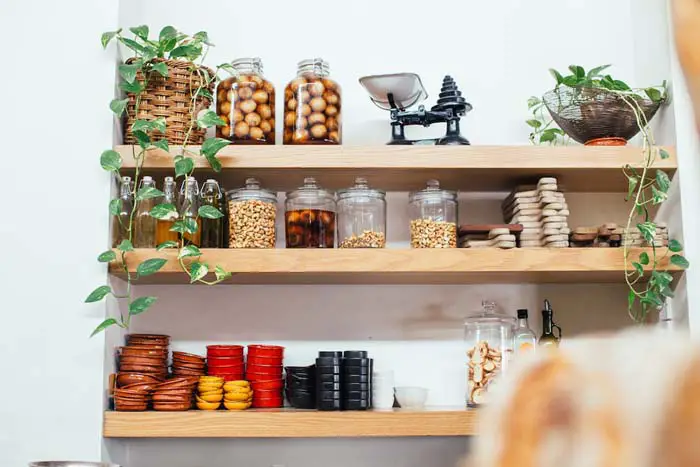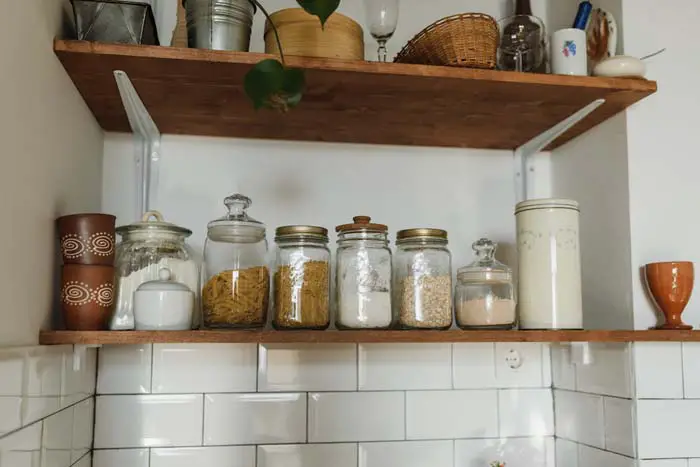To reduce and get rid of all of your unused “things,” declutter your home. Decluttering your home can reduce stress and help you discover what you need more quickly. The pantry is a must-declutter if you’re on a home-decluttering mission.
In addition to finding what you need easier, a clean pantry will help you make better use of your available storage space. You can declutter the pantry in a single afternoon by following these simple steps.
A well-thought-out decluttering strategy includes both forethought and dedication. Organizing your home is a marathon, not a sprint, so be sure you have a plan before beginning “Project Pantry.”
- Splitting a major pantry project into smaller ones isn’t a problem. In other words, there’s no requirement that you complete the entire room/cupboard at once. Consider tackling one shelf each day.
- Be honest with yourself about how long it will take
- Choose a time and perhaps even schedule it in your calendar
Remove Everything You Have
Always start by clearing up your pantry. Make sure you don’t try to save money by merely removing half of your cupboard and reorganizing the rest. Only a less efficient storage system and more labor will result from this.
Put all your belongings on the floor so you can simply take inventory.
Taking Inventory
While it’s understandable if you’re quick to put everything back in the pantry, this is not the best option. You’re more than likely to have expired food in your current stock. Make sure to check the expiration dates on each one before restocking your pantry with dried products. You have to use bulk goods without labels at your own risk because they aren’t as easy to tell what they are as jarred or canned goods.
Dry items such as beans, nuts, and rice can go bad even if they don’t “appear” old. They may be flavorless and stale, or even rotten, at the very least. Use a permanent marker or tape to label any new bulk purchases you make. Toss expired goods in the garbage when you’re finished sorting. Then, clean anything you’ve chosen to preserve using warm water and a rag. You do not want to re-contaminate your recently cleaned pantry with dirt and filth.
Thoroughly cleaning up
Before you begin organizing your pantry, take a few minutes to clean up every drawer and shelf thoroughly. If you’ve had old packaging or crumbs on the shelves or the floor, now is the time to clean them up.
If you’d like to reorganize your pantry, now is the time. You want to choose a liner that you can clean easily but hides any spills or stains.
Give away unwanted things
Many people are guilty of making the most of offers, even if they have never tried before, and have no idea whether or not they will like them. After trying one product, they realize they don’t want it. The rest of the items are left unused in the pantry. Make room in your home by getting rid of the things you no longer use. Unless it’s out-of-date, don’t throw food out. You can donate the food to charitable organizations or local food banks instead. If you have unwanted items, many individuals in need can use them.
Gather all your pantry staples and arrange them in groups of three or four. Organize your materials into categories like snacks for children, cereals, and baking supplies to make locating what you’re looking for simple.
Place them at the top of your grocery list to make it easy to discover the groupings of items your family eats the most frequently.
Make sure you’ve got the necessary storage solutions

While storage solutions aren’t always necessary, they can greatly impact the organization of your pantry in many cases. There are a variety of ways to keep things tidy and organized, such as using containers, racks, hooks, bins, lazy Susans, hangers, and baskets.
You’ll be best positioned to keep your pantry tidy if you choose your storage solutions carefully.
If you’ve seen TV shows where the pantry appears like a retail display, it can be tempting to go overboard with this. When purchasing storage, ensure you get something that will work for you. If you do not intend to decant the food, do not purchase a lot of clear plastic storage containers.
Creating a long-term organizational structure isn’t about making it appear like a model. Find out what works best for you and your family.
Huge, hefty cardboard boxes occupy lots of space in the pantry and only serve to clog it more. Discard the original packaging and store food in transparent storage containers.
Creating “zones” in the pantry will make it easier to find what you need without going through a whole shelf of items.
Make a List
Do your best to keep track of what you have in your pantry as you restock it. This is extremely useful if you don’t use many ingredients like spices or baking supplies. Keeping track of everything you own can help you avoid buying duplicates. It will ensure that you always have the ingredients for any particular recipe.
Consider painting your door with chalkboard paint instead of just using a paper or digital list so you can add and remove items as needed.
Don’t overlook the inside of your door and the internal walls of your home. To prevent clogging the pantry’s shelves, consider storing spices in wall-mounted storage containers or small baskets nailed to the walls. In addition to keeping clutter off your shelves, these tiny storage places are considerably easier to maintain, clean, and organize.
Make the Most of Your Shelves
Decluttering your pantry usually means getting rid of things you will not use or do not need. But it may also be a great way to make the most of your space. If you have vertical space you don’t use, you can use under-shelf baskets or wire shelves to maximize your storage space.
In order to make this strategy work, you must make it a priority every few months to clear up the clutter that has built up in these new storage areas.
Conclusion
While cleaning out your pantry, quickly sweep the shelves while you’re at it. You can use a damp towel and an antibacterial to clean a newly cleared area. Dry the surface with a tea towel before returning the things to the cupboard. While you’re at it, clean up any dusty goods accumulated in the cupboard.


